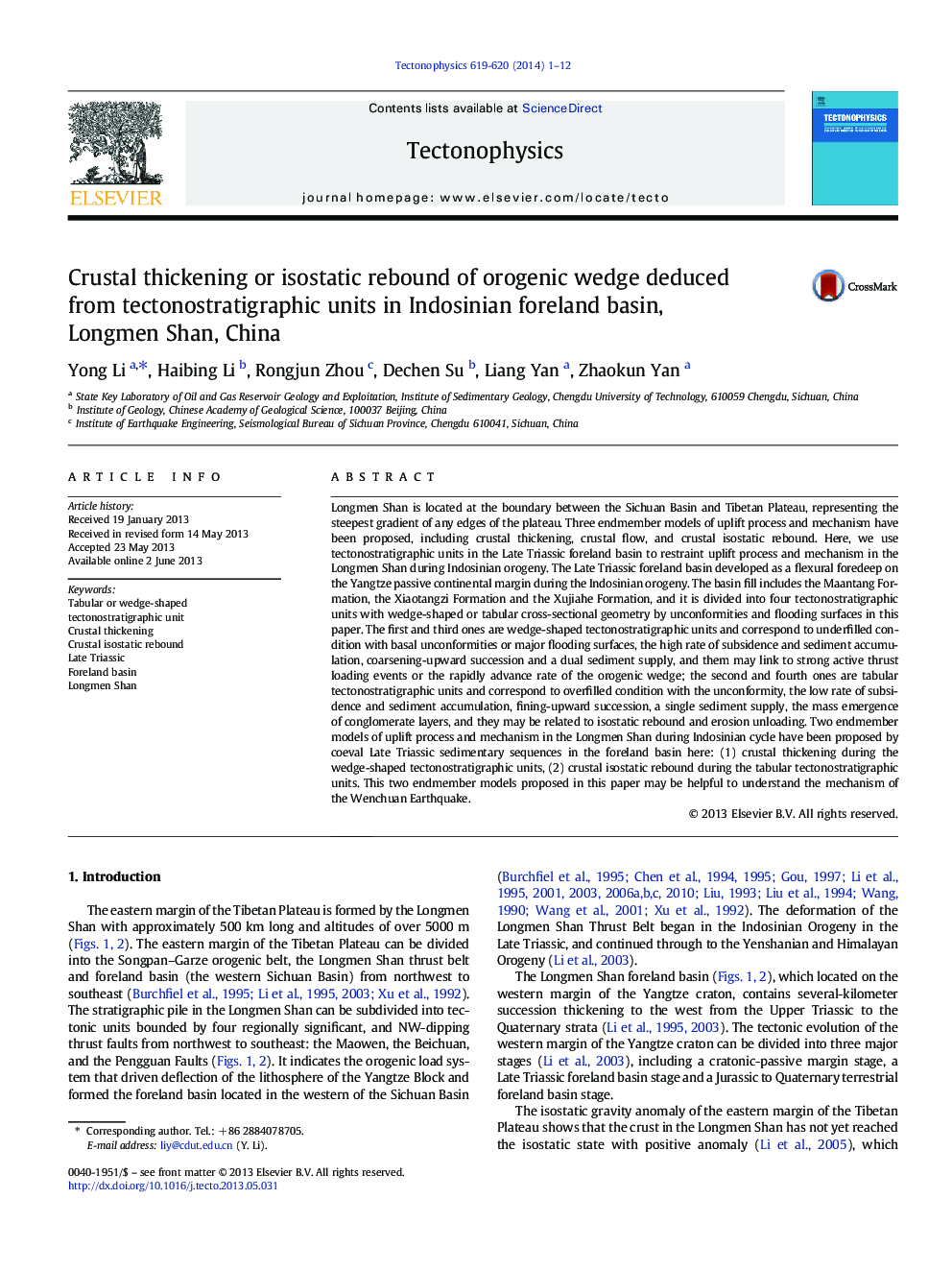| کد مقاله | کد نشریه | سال انتشار | مقاله انگلیسی | نسخه تمام متن |
|---|---|---|---|---|
| 4692009 | 1636770 | 2014 | 12 صفحه PDF | دانلود رایگان |

• The Late Triassic foreland basin fill is divided into wedge-shaped and tabular tectonostratigraphic units.
• The wedge-shaped one related to strong active thrust loading events.
• The tabular one related to isostatic rebound and erosion unloading.
• Crustal thickening during the wedge–shaped tectonostratigraphic units.
• Crustal isostatic rebound during the tabular tectonostratigraphic units.
Longmen Shan is located at the boundary between the Sichuan Basin and Tibetan Plateau, representing the steepest gradient of any edges of the plateau. Three endmember models of uplift process and mechanism have been proposed, including crustal thickening, crustal flow, and crustal isostatic rebound. Here, we use tectonostratigraphic units in the Late Triassic foreland basin to restraint uplift process and mechanism in the Longmen Shan during Indosinian orogeny. The Late Triassic foreland basin developed as a flexural foredeep on the Yangtze passive continental margin during the Indosinian orogeny. The basin fill includes the Maantang Formation, the Xiaotangzi Formation and the Xujiahe Formation, and it is divided into four tectonostratigraphic units with wedge-shaped or tabular cross-sectional geometry by unconformities and flooding surfaces in this paper. The first and third ones are wedge-shaped tectonostratigraphic units and correspond to underfilled condition with basal unconformities or major flooding surfaces, the high rate of subsidence and sediment accumulation, coarsening-upward succession and a dual sediment supply, and them may link to strong active thrust loading events or the rapidly advance rate of the orogenic wedge; the second and fourth ones are tabular tectonostratigraphic units and correspond to overfilled condition with the unconformity, the low rate of subsidence and sediment accumulation, fining-upward succession, a single sediment supply, the mass emergence of conglomerate layers, and they may be related to isostatic rebound and erosion unloading. Two endmember models of uplift process and mechanism in the Longmen Shan during Indosinian cycle have been proposed by coeval Late Triassic sedimentary sequences in the foreland basin here: (1) crustal thickening during the wedge-shaped tectonostratigraphic units, (2) crustal isostatic rebound during the tabular tectonostratigraphic units. This two endmember models proposed in this paper may be helpful to understand the mechanism of the Wenchuan Earthquake.
Journal: Tectonophysics - Volumes 619–620, 21 April 2014, Pages 1–12